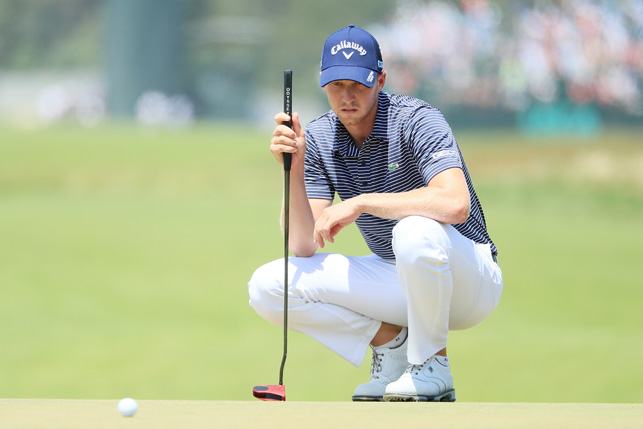
Callaway Golf’s Odyssey R-Ball Prototype putter head, produced on GE Additive’s Concept Laser M2 3D printer, after initial postprocessing
As the team from GE Additive readily admits, Callaway knows a thing or two about creating top-level golfing equipment, including the putters and irons with which the brand is globally synonymous.
So, it was for a very special purpose that the additive manufacturing experts were invited to rework one of Callaway’s latest putters in its Odyssey range, a favourite among pros and amateurs alike.
The Odyssey R-Ball Prototype putter was originally developed as a Tour-preferred model in Japan, its looks and distinctive, high-pitch ‘ting’ acoustic signature being the preference in that market.
The goal was to set about redesigning the R-Ball for more western acoustic tastes (less ‘ping’, more ‘plod’), so as part of its product innovation strategy, Callaway Golf took the opportunity to work with GE Additive’s AddWorks experts to redesign the putter head for additive manufacturing.

Daniel Berger at the US Open with the R-Ball. Daniel inspired the design of the putter prototype
“In terms of innovation and technology leadership in its sector, Callaway Golf stands head and shoulders above the rest,” says AddWorks general manager Chris Schuppe, explaining that the project was not done simply for the sake of using metals 3D printing, but to improve a product.
For this particular putter head, the best way to optimise its acoustics was to add geometry using sound-mapping simulation, coupled with topology optimisation, although this created forms too difficult for conventional casting methods.
GE Additive Addworks’ engineering consultants worked with Callaway’s design and engineering teams to apply additive manufacturing design practices and build upon the already proven design.
“They’re experts in their field already, but what they need help with is designing for additive manufacturing, and that’s kind of where we come in,” says Rob Hanet, a senior design engineer at GE Additive.
The AddWorks team refined existing designs to ensure all the putter head features were self-supported or easily supported during the 3D printing process.
Extra support branches were then designed to account for thermal stresses and overhang constraints particular to the GE Additive Concept Laser M2 3D printer that was used.
“Callaway Golf must learn how to use this tool well,” says Brad Rice, R&D director for advanced engineering at Callaway.
“It’s inevitable that 3D printing of production parts will happen. It’s the production method of the future.”
Rice adds that to take aspects of the design further, particularly in the area of sound, the method of 3D printing the final part is the only way to solve the challenge, while also offering the ability to add further aesthetic flourishes that are equally important to a golfer.

The final Odyssey R-Ball Prototype putter head
“We’re allowed to literally change the performance of the product and create this pleasingly different shape that has a more ‘generative design’ look to it,” he says.
For GE Additive, the AddWorks partnerships creates huge experience value for the company and its products, according to Rob Hanet. “What GE really gets out of this collaboration is insight into other industries: we can take that learning and make our machines better,” he says.
“We really want our equipment to enable our customers to meet the needs of their industry.”
In other words, while Callaway Golf is learning how it can use new additive methods in order to develop the sports equipment of the future, AddWorks is receiving in return transferable design knowledge, and GE Additive is uncovering new, reallife experience on how to better tune its hardware.
As far as partnerships go, this is certainly a mutual win-win that all parties can enjoy celebrating at the 19th hole.

A new design Odyssey with additive manufacturing at Callaway Golf
Default






